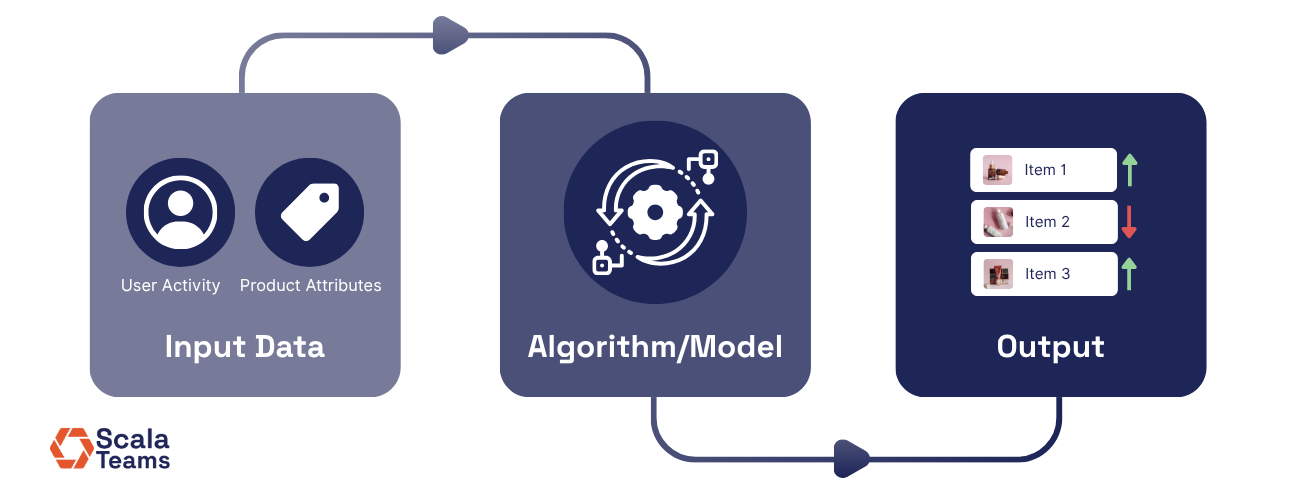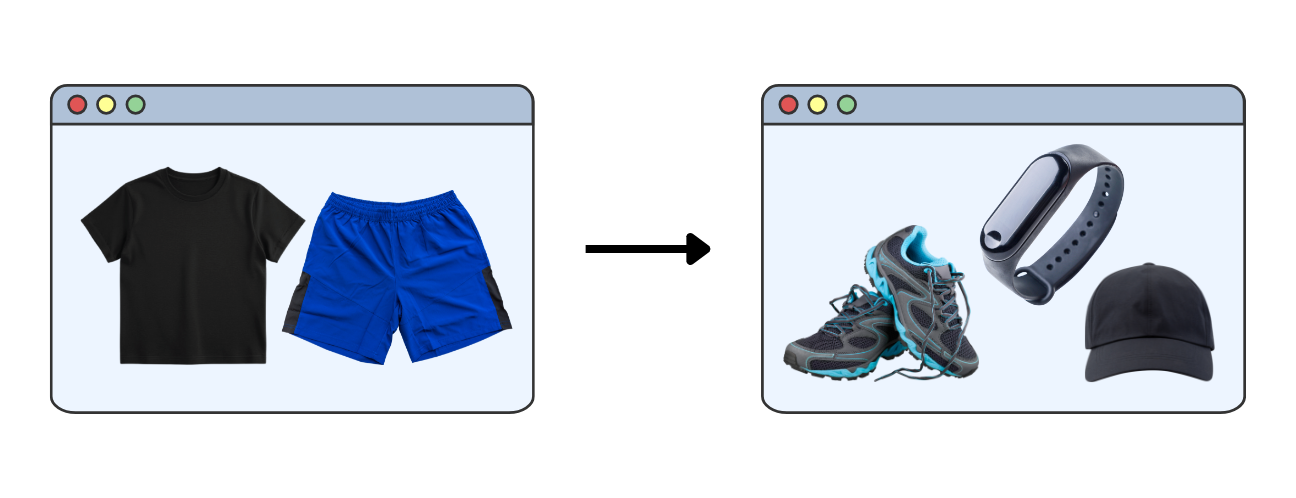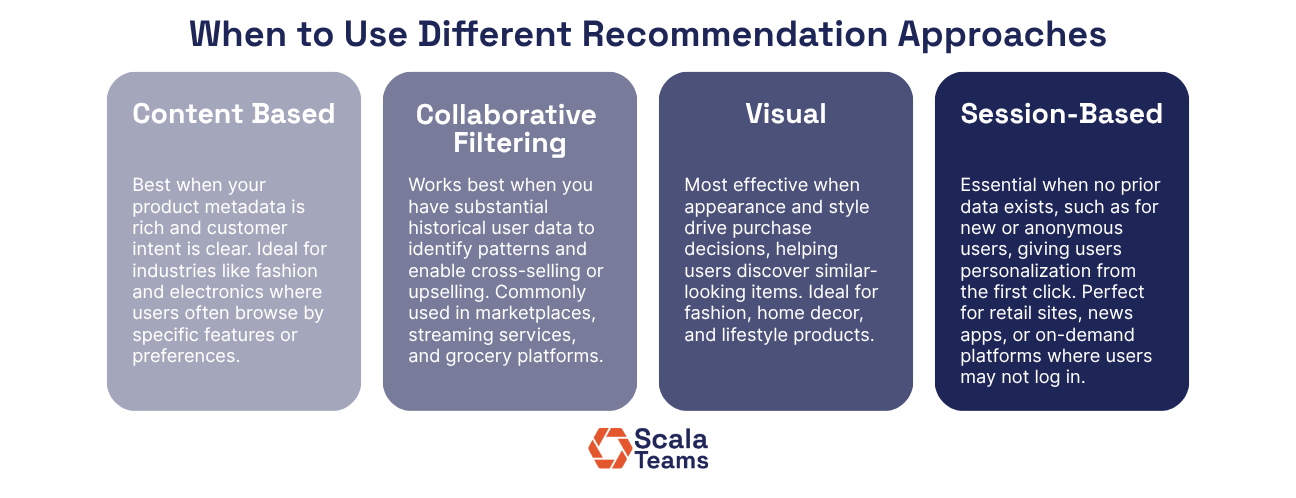The Business Impact of Recommendation Engines
Have you ever wondered how ecommerce sites present products that perfectly match your taste? Or how platforms like Netflix seem to know exactly what you want to watch next, often before you do? These are not coincidences. They are the result of powerful recommendation engines working behind the scenes. These systems are not just a "nice-to-have" feature; they are a fundamental pillar of modern business strategy, fueling growth, engagement, and customer satisfaction.
According to industry research, 35% of Amazon’s revenue comes directly from its recommendation system. Similarly, 80% of Netflix’s viewing activity is driven by recommendations. Recommendations do more than improve the user experience; they also directly impact revenue, customer retention, and brand loyalty. For companies in competitive online markets, building a robust recommendation engine is a necessity.
In this blog, we’ll explore what recommendation engines are, why they matter, and the main approaches used today. This blog is an overview and in the coming parts, we’ll look deeper into each type of recommendation system in detail.
What is a Recommendation Engine?
A recommendation engine is an Artificial Intelligence (AI) system that uses big data and machine learning to help users in finding what they are looking for within an overwhelming number of available options. Think of it as the digital version of a sales associate who understands your taste, anticipates your needs, and makes spot-on suggestions.
At a high level, the process looks like this:
Input data: User behavior & product details.
Algorithm/Model: Different methods to analyze patterns.
Output: A ranked list of items.
Transformation of Recommendation Systems
The evolution of recommendation systems has been nothing short of transformative. Early on, product recommendations were manually curated by merchandisers using simple business rules, an approach that quickly fell short as online catalogs and customer behavior became more complex.
Today, AI-powered recommendation engines use machine learning, deep learning, and real-time analytics to understand not only what customers purchase, but also why they buy. By transforming static, rule-based associations into dynamic, personalized, and predictive experiences, modern recommendation systems turn browsing into buying. This drives engagement, increases average order value (AOV), and strengthens customer loyalty.
Understanding how recommendation engines have evolved makes it easier to see what it takes to build one from the ground up.
Key Steps to Build a Recommendation Engine
Building a recommendation engine is a complex process, but breaking it down into clear, high-level stages makes it manageable. Below is the core workflow for turning raw data into valuable suggestions:
Data Collection: Gather customer data such as browsing history, clicks, purchases, ratings, and session activity. The more complete the dataset, the stronger the foundation for personalization.
Data Processing: Clean, normalize, and structure the data to identify meaningful patterns between users and items.
Feature Engineering: Create relevant features like product attributes, customer profiles, or image embeddings that help the model to learn contextual relationships and similarity patterns.
Model Selection, Training & Evaluation: Choose the most effective approach depending on your use case. Train models on historical data and then evaluate it for accuracy, diversity, and coverage.
Deployment: Integrate the trained model into your platform to serve real-time recommendations.
Continuous Feedback & Improvement: Monitor performance and retrain models as user behavior, catalog content, and industry conditions change.
What are the Main Types of Recommendation Systems (and When to Use Each One)?
Not all recommendation systems work the same way. The best approach depends on your data, your products, and your business goals. Below are the four key approaches used, each with a distinct strength:
Content-Based Recommendations (Alternate)
Collaborative Filtering (Related)
Visual Recommendations (Image-Based)
Session-Based Recommendations (User activity)
1. Content Based Recommendations (Alternate)
This method recommends items based on their attributes, such as category, color, or price. It operates on a simple premise: if a user likes a particular item, they will likely enjoy another similar item. This approach is strategically valuable for new platforms as it doesn't require historical user data to function.
Example: A shopper looking at an orange chair gets recommendations for other chairs in different colors or brands.
2. Collaborative Filtering (Related Products)
Collaborative filtering makes recommendations based on the preferences and behaviors of similar users. It relies on the idea that if two people have similar tastes, they are likely to enjoy the same items. While powerful, collaborative filtering requires significant historical user data to be effective, making it a goal for post-launch rather than a day-one solution.
Example: A customer buying a laptop is recommended laptop bags, mice, and keyboards frequently bought by other users.
3. Visual Recommendations (Image-Based)
Visual recommendations are an advanced approach that uses computer vision models to analyze the visual properties of product images. It recommends products that are visually similar to items a user has viewed, liked, or purchased.
Example: A shopper looking at a black shirt gets recommendations for similar shirts in different styles or brands.
4. Session-Based Recommendations
Session-based recommendations provide real-time suggestions based on a user's actions within a single browsing session. This requires a significant investment in real-time data processing.
Example: First-time visitor browsing sportswear is immediately recommended related shoes and accessories based on current clicks.
When to Use Which Recommendation Approach
The success of your recommendation system depends on choosing the right strategy. Here are some common scenarios and the best approach for each:
Content-Based: Best when your product metadata is rich (e.g., detailed attributes, tags, or descriptions) and customer intent is clear. Ideal for industries like fashion and electronics where users often browse by specific features or preferences.
Collaborative Filtering: Works best when you have substantial historical user data to identify patterns and enable cross-selling or upselling. Commonly used in marketplaces, streaming services, and grocery platforms.
Visual: Most effective when appearance and style drive purchase decisions, helping users discover similar-looking items. Ideal for fashion, home decor, and lifestyle products.
Session-Based: Essential when no prior data exists, such as for new or anonymous users, giving users personalization from the first click. Perfect for retail sites, news apps, or on-demand platforms where users may not log in.
Key Benefits of a Tailored Recommendation Engine
Implementing a recommendation system is a significant investment, but the returns are substantial. The right recommendation engine improves both business performance and customer experience in measurable ways:
Improved User Experience: Relevant, data-driven suggestions helps users quickly find what they’re looking for. This reduces decision fatigue, simplifies navigation through large catalogs, and creates a personalized journey that increases satisfaction.
Increased Customer Conversions and Revenue: Personalized recommendations turn casual browsers into engaged buyers by highlighting products and content that matches user intent, leading to larger cart size and increased order frequency.
Better Customer Retention: When customers feel understood by your brand, they develop loyalty. Personalized experiences build trust, reduce churn, and keep users coming back.
Higher Engagement: Users spend more time on a platform when they can easily discover content and products they love. This increased time-on-site is a strong indicator of a positive user experience.
Challenges of Building and Maintaining a Recommendation Engine
Recommendation engines are powerful tools, but they come with their own set of technical and ethical challenges. Recognizing these hurdles early helps teams plan smarter and create systems that scale responsibly.
Cold Start Problem: New users or products lack historical data, making it difficult to deliver accurate recommendations. New platforms often start with content-based filtering, which relies on product attributes instead of past user behavior to bridge this gap.
Scalability, Cost, and Speed: Delivering real-time recommendations to millions of users requires high-performance infrastructure, significant computing resources, and experienced engineering talent. Balancing accuracy, latency, and cost efficiency is an ongoing optimization challenge.
Data Privacy and Compliance: Collecting and using personal data must be handled with strict adherence to privacy laws (like GDPR and CCPA). Businesses must navigate privacy concerns and regulatory requirements to build and maintain user trust.
Algorithmic Bias: Models trained on biased or unbalanced data can unintentionally reinforce biases in recommendations. Continuous monitoring, diverse training data, and human oversight are essential to ensure fairness and accuracy.
Why Recommendation Engines Matter More Than Ever
Recommendation engines have become the driving force behind personalized ecommerce experiences. By intelligently suggesting alternatives, complementary products, and visually similar items while understanding a shopper’s intent in real time, these AI-powered systems increase engagement, boost revenue, and reduce friction. Today’s most successful brands are able to turn customer data into meaningful, tailored experiences that make every interaction feel personal. From foundational content-based filtering to advanced contextual models, recommendation engines power the core of the modern digital shopping journey by using AI to deliver relevance and personalization at scale.







